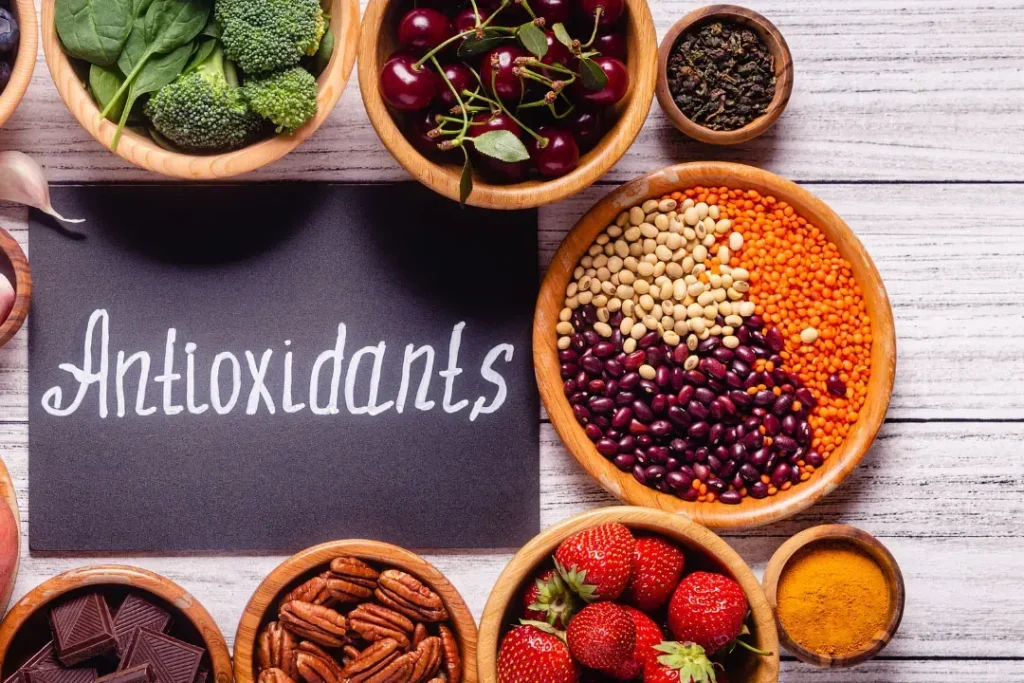Mentha longifolia (L.) Huds., often known as English Horsemint, is a perennial plant in the Lamiaceae family. English Horsemint is typically located in Europe, Western Asia, and certain regions of Africa. The possible health advantages, dangers, and appropriate use of this fragrant plant are deserving of more research because of its long history in traditional medicine and its equally promising position in modern health practices. This article endeavors to inform you of those aforementioned aspects of English Horsemint, should you consider taking as a supplement yourself.
You May Also Like:
5 Great Nootropic Herbs for Focus and Mental Clarity
5 Great Nootropic Herbs for Energy, Focus, and Productivity
English Horsemint: Benefits, Dosage, Side Effects, Drug Interactions, and Other Important Information is an original (NootropicsPlanet) article.
The Nature of English Horsemint
English Horsemint is distinguished by its tall, pink or lilac blooms and elongated leaves, which are usually in bloom during the months between July to September. The plant’s abundance of volatile oils, including menthol, menthone, and limonene, which together contribute to its medicinal potential, are responsible for the scent, which is distinctive mint essence and flavor. English Horsemint has an intriguing chemistry that includes a variety of phytochemicals such flavonoids, phenolic acids, tannins, and triterpenes.
Complex mechanisms underlie how these substances produce their effects. Menthol, for instance, activates the skin’s TRPM8 cold-sensitive receptors, giving the skin a calming, cooling sensation. However, flavonoids function as strong antioxidants that bind and neutralize dangerous free radicals, lowering oxidative stress in the body.
Health Benefits of English Horsemint
- Digestive Health: One of English Horsemint’s most well-known uses is improving digestion. Carminative characteristics of the plant’s volatile oils, notably menthol, help to relieve the symptoms of indigestion, bloating, and gas. It has also been reported to have antiemetic properties that lessen nausea and vomiting.
- Antibacterial Properties: Due primarily to the volatile oils in English Horsemint, it has a wide range of antibacterial activities. This includes actions that are antibacterial, antifungal, and antiviral, which can aid in the treatment of a variety of ailments.
- Respiratory Health: The plant’s menthol-based decongestant characteristics aid to relieve the signs of common respiratory conditions like the common cold, bronchitis, and sinusitis.
- Analgesic and Anti-inflammatory Effects: Existing and emerging data suggests that English Horsemint contains analgesic and anti-inflammatory qualities, making it useful for treating pain and inflammation. These effects are thought to be mostly caused by chemicals like menthol and flavonoids.
- Antioxidant Activity: The plant has an antioxidant potential due to the presence of flavonoids and phenolic substances, which may protect against cancer and other chronic illnesses by preventing oxidative stress.

Chemistry of English Horsemint
The unique medicinal qualities of English Horsemint are a result of the many phytochemicals that make up the plant’s chemical composition. The main components that give it its distinctive scent are the volatile or essential oils. Menthol and menthone make up the majority of these oils, with limonene, pulegone, cineole, and pinene making up the remainder of them.
In addition to this, English Horsemint also has a range of flavonoids, a group of secondary metabolites found in plants that are renowned for their potent antioxidant qualities. Eriocitrin, luteolin, and hesperidin are a few of the flavonoids that have been discovered in English Horsemint thus far. The plant also contains phenolic acids including rosmarinic and caffeic acids, which have antioxidant properties. Other components include triterpenes, a family of chemicals, and tannins, which are polyphenolic substances having astringent characteristics.
Physiological Mechanisms of Action
The volatile oils and other phytochemical components of English Horsemint play a significant role in the physiological processes of action. Each of these substances operates through a different mechanism, which adds to the plant’s total medicinal potential.
For instance, menthol operates largely on the cold-sensitive TRPM8 receptors in the sensory neurons, which are what give it its cooling effect when consumed. This mechanism underlines the efficacy of menthol in topical analgesic medications as well as its application in easing discomfort caused by mild throat and mouth irritation.
Another important ingredient, menthone, has carminative properties that help to relieve digestive discomfort including bloating and gas. It accomplishes this by calming the smooth muscles of your digestive system, minimizing spasms, and facilitating the passage of food and other substances.
English Horsemint contains flavonoids and phenolic acids that have strong antioxidant effects on the body by scavenging dangerous free radicals. Free radicals are unstable chemicals that may harm cells, speeding up aging and a number of diseases including cancer and heart disease. Horsemint’s antioxidants may lessen harm by scavenging these free radicals.
The volatile oils in English Horsemint are thought to be responsible for the plant’s antibacterial capabilities since they have been shown to stop the growth of several bacteria, fungi, and viruses. Depending on the particular bacterium, the precise method varies, but it frequently includes compromising the integrity of the microbial cell membrane, which results in cell death.
Finally, triterpenes and other chemicals found in English Horsemint are thought to have anti-inflammatory properties. These substances prevent the synthesis of pro-inflammatory cytokines – signaling molecules that promote inflammation. This makes English Horsemint potentially beneficial in conditions characterized by chronic inflammation.


Optimal Dosage of English Horsemint
The ideal dose of English Horsemint can be difficult to determine because it varies depending on the herb’s form (tea, oil, or capsules), the ailment being treated, and personal characteristics like your age, weight, and general health. Adults can often drink one to two cups of English Horsemint tea each day, or they can use the essential oil as prescribed by a doctor. It’s important for you to start with minimal dosages and watch out for any negative effects.
Side Effects
Even though English Horsemint has many health advantages, if used inappropriately or in excess, it might have negative consequences. These include headaches, heartburn, and allergic responses. Additionally, consuming a lot of menthol might cause nausea, vertigo, and even convulsions. Please exercise a healthy amount of caution when consuming English Horsemint.


Potential Substance Interactions
In terms of interactions, English Horsemint could have an effect on some drugs you are taking. For instance, it might hypothetically amplify the effects of anticoagulant and antiplatelet medications, raising the risk of bleeding, due to its putative antiplatelet properties. Additionally, the herb may affect how some medications are metabolized, changing how effective they are. In light of this, it is advisable to get medical advice before beginning any new herbal supplement, including English Horsemint.
Responsible Use
There are a number of actions that may be performed to maximize the advantages of English Horsemint while lowering any possible hazards. Firstly, use should be introduced in tiny doses to check for any negative effects. Secondly, in order to guarantee the herb’s quality and safety, purchase it from reliable vendors. Thirdly, avoid using English Horsemint if you have a known allergy to plants in the Lamiaceae family.
Last but not least, anybody taking any prescription should talk to their doctor before starting the herb to avoid potential drug interactions. As a result of its rich phytochemical composition and great health advantages, English Horsemint is a beneficial complement to natural health regimens. As with any supplement, it should be used sensibly while taking potential negative effects and interactions into account. Its therapeutic potential must be thoroughly understood before more precise dose recommendations can be made.


English Horsemint:
Conclusion
English Horsemint can be a refreshing tasting tea or supplement that packs a punch. English Horsemint can be used in a variety of forms, including a topical treatment, which some people find amplifies the cooling, soothing nature of it. It is effective at improving health on a cellular level. It can ease digestion and rid your body of harmful elements. The abundant phytochemicals in English Horsemint assist the body’s production of antioxidants, safeguarding you from diseases like cancer and others. Please conduct adequate research and engage in adequate consultation with medical professionals as you consider if English Horsemint is right for you.
References:
- “Health Benefits of Mint: Digestion, Headaches, Fevers, and More.” Retrieved from: https://www.healthline.com/nutrition/mint-benefits
- “Mentha longifolia – (L.)Huds.” Retrieved from: https://pfaf.org/user/plant.aspx?LatinName=Mentha+longifolia
- “Pharmacological activity of Mentha longifolia and its phytoconstituents.” Retrieved from: https://www.sciencedirect.com/science/article/pii/S0254627217303278
Important Note: The information contained in this article is for general informational purposes only, and should not be construed as health or medical advice, nor is it intended to diagnose, prevent, treat, or cure any disease or health condition. Before embarking on any diet, fitness regimen, or program of nutritional supplementation, it is advisable to consult your healthcare professional in order to determine its safety and probable efficacy in terms of your individual state of health.
Regarding Nutritional Supplements Or Other Non-Prescription Health Products: If any nutritional supplements or other non-prescription health products are mentioned in the foregoing article, any claims or statements made about them have not been evaluated by the U.S. Food and Drug Administration, and such nutritional supplements or other health products are not intended to diagnose, treat, cure, or prevent any disease.
